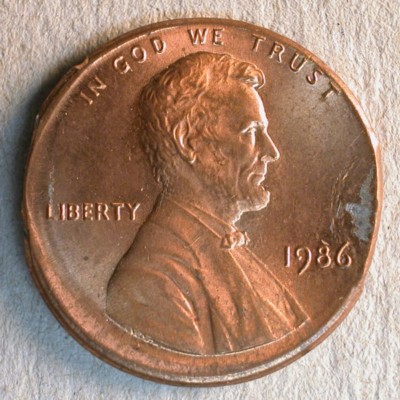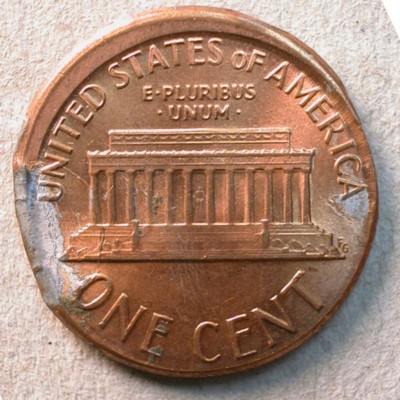PART VI. Striking Errors:
Edge Strike:
Off-center or Broadstrike Produced by Continuation
of the Down Stroke
Definition: An edge strike is a coin struck on-edge. It may have entered the striking chamber spinning on its edge. It may have been kicked up into a vertical position by the insertion finger. It may have entered the striking chamber rolling along on its edge. Or it may have been flying through space and managed to get caught by the descending hammer die.
After initial contact, an edge-struck planchet slips and falls on its side. During this phase it is often kicked out of the striking chamber. The impact on the edge may cause the planchet to bend. The presence and severity of the bend is highly variable. The reason the planchet slips may be because it might have not have been perfectly vertical or it might have been sitting in a sloping recess of the die face that caused it to slip. In either case, folding is not complete. If it was, the coin would have been converted into a foldover strike (see foldover strike).
An edge strike can appear at both poles of an otherwise unstruck planchet. A coin can receive a second strike that also happens to be an edge strike. Sometimes an edge-struck planchet slips and lands on its side within the striking chamber. It then receives a conventional strike (centered or off-center) during the completion of the downstroke of the hammer die. The last eventuality is illustrated here by a 1986 cent.

